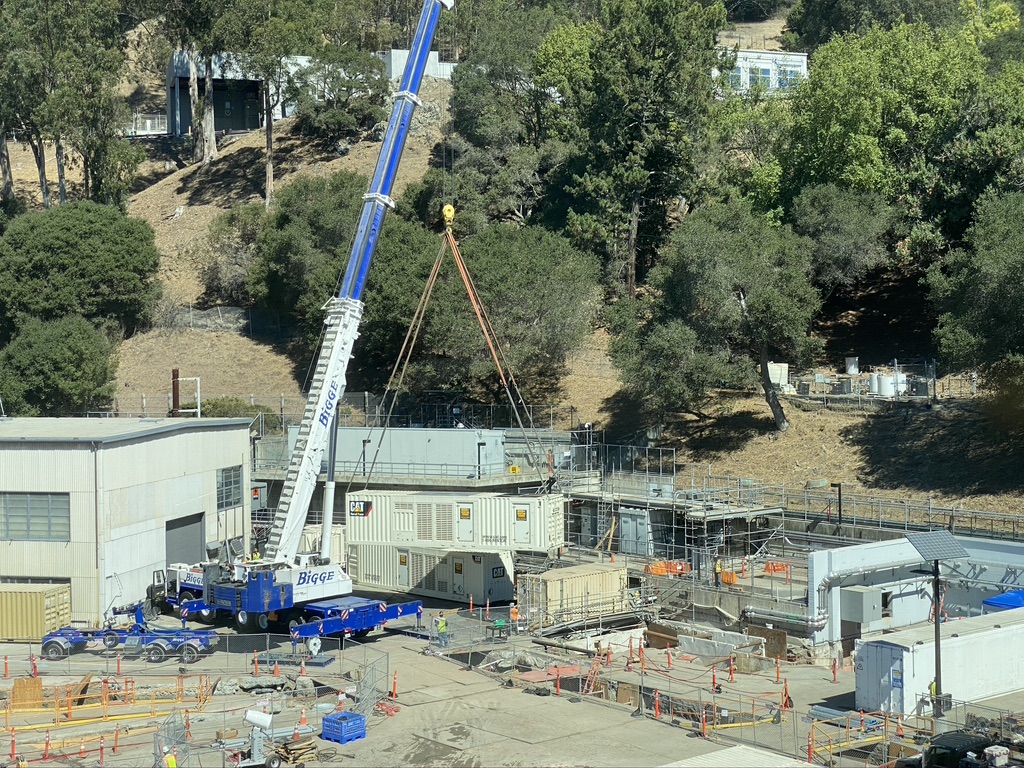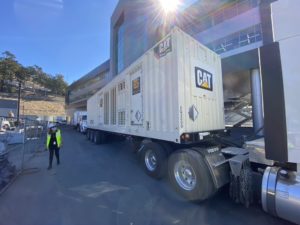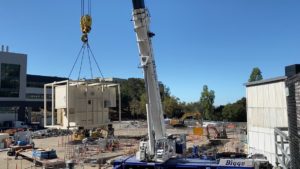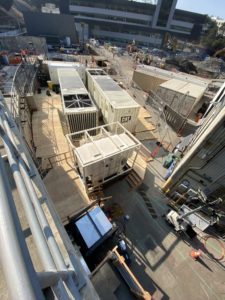
On Saturday, November 7, a team of Lab personnel and PG&E contractors will conduct a power resiliency test which will affect the northwestern portion of the Lab. Two 2 megawatt generators, provided and operated by PG&E, will be energized and the load of multiple facilities will be transferred from utility power to the generators. The test will simulate the power transfer that may occur during a future Public Safety Power Shutoff (PSPS) event. This pilot project is a significant accomplishment as it provides a potentially scalable solution for PSPS events that allows buildings to remain operational in a reduced power mode, and significantly reduces the time and effort to restore full operations after the event.
Creating the Plan
 The plan was developed by the Facilities Division Power Resiliency Task Force which is charged with evaluating the Lab’s infrastructure power vulnerabilities and identifying power to improve resiliency. The Task Force collaborated with the Research Resiliency Working Group, which explores longer term resiliency strategies, the Department of Energy, and PG&E to develop the plan. After last year’s PSPS events, multiple backup strategies were considered including centralized power generation as well as increased backup power capacity at individual buildings. The test on Saturday supplies generator power to a 12kV switch station (SWA6) that in turn supplies power to multiple buildings. The generators are leased from PG&E and this project represents a ‘proof of concept’ approach that will refine longer term solutions for increasing the Lab’s resiliency to power outages.
The plan was developed by the Facilities Division Power Resiliency Task Force which is charged with evaluating the Lab’s infrastructure power vulnerabilities and identifying power to improve resiliency. The Task Force collaborated with the Research Resiliency Working Group, which explores longer term resiliency strategies, the Department of Energy, and PG&E to develop the plan. After last year’s PSPS events, multiple backup strategies were considered including centralized power generation as well as increased backup power capacity at individual buildings. The test on Saturday supplies generator power to a 12kV switch station (SWA6) that in turn supplies power to multiple buildings. The generators are leased from PG&E and this project represents a ‘proof of concept’ approach that will refine longer term solutions for increasing the Lab’s resiliency to power outages.
 This pilot project required significant collaboration with PG&E executives and system engineers as well as an accelerated permitting process to allow the Lab to install and connect two leased 2 megawatt generators, a transformer, and a “make before break” transfer switch that allows a seamless power transfer as utility power is cut.
This pilot project required significant collaboration with PG&E executives and system engineers as well as an accelerated permitting process to allow the Lab to install and connect two leased 2 megawatt generators, a transformer, and a “make before break” transfer switch that allows a seamless power transfer as utility power is cut.
If this proof of concept test is successful, the Task Force will work toward installation of permanent equipment at this location (SW-A6), and also scaling this solution to other switch stations; potentially (SW-A5) that powers the East Canyon area of the Lab, including the Molecular Foundry.
Test Details
The test takes place on Saturday, November 7, between 6:00 a.m. and 6:00 p.m., and involves the following buildings: 50, 50A, 50B, 50C, 50E, 50F, 54, 55, 55A, 56, 56A, 56M, 60, 63, 64, 65, 65A, 65B, 70, 70A, 71, 71A, 71B, 71 Trailers, 88, 90, 90C, 90P, 90X, 91, and 91U.
 The generators, set between buildings 64 and 91, are each the size of a tractor trailer. They can run for up to 24 hours on an eight-thousand gallon fuel tank. They supply up to 4 megawatts of electrical power.
The generators, set between buildings 64 and 91, are each the size of a tractor trailer. They can run for up to 24 hours on an eight-thousand gallon fuel tank. They supply up to 4 megawatts of electrical power.
Since the peak load measured at Switch Station A6 is 5.4 megawatts, this test also involves reducing power demand. Some systems will be powered down and the buildings will be operated in a safe and stable reduced power mode.
This process of reducing the power load is known as load shedding. To ensure that the electrical load stays within the generator limits, the affected buildings will be closed for the duration of the test.
Complete details on the test and how it will affect buildings can be found on the Planned Outage Map under SW-A6 Load Shed Dry Run.